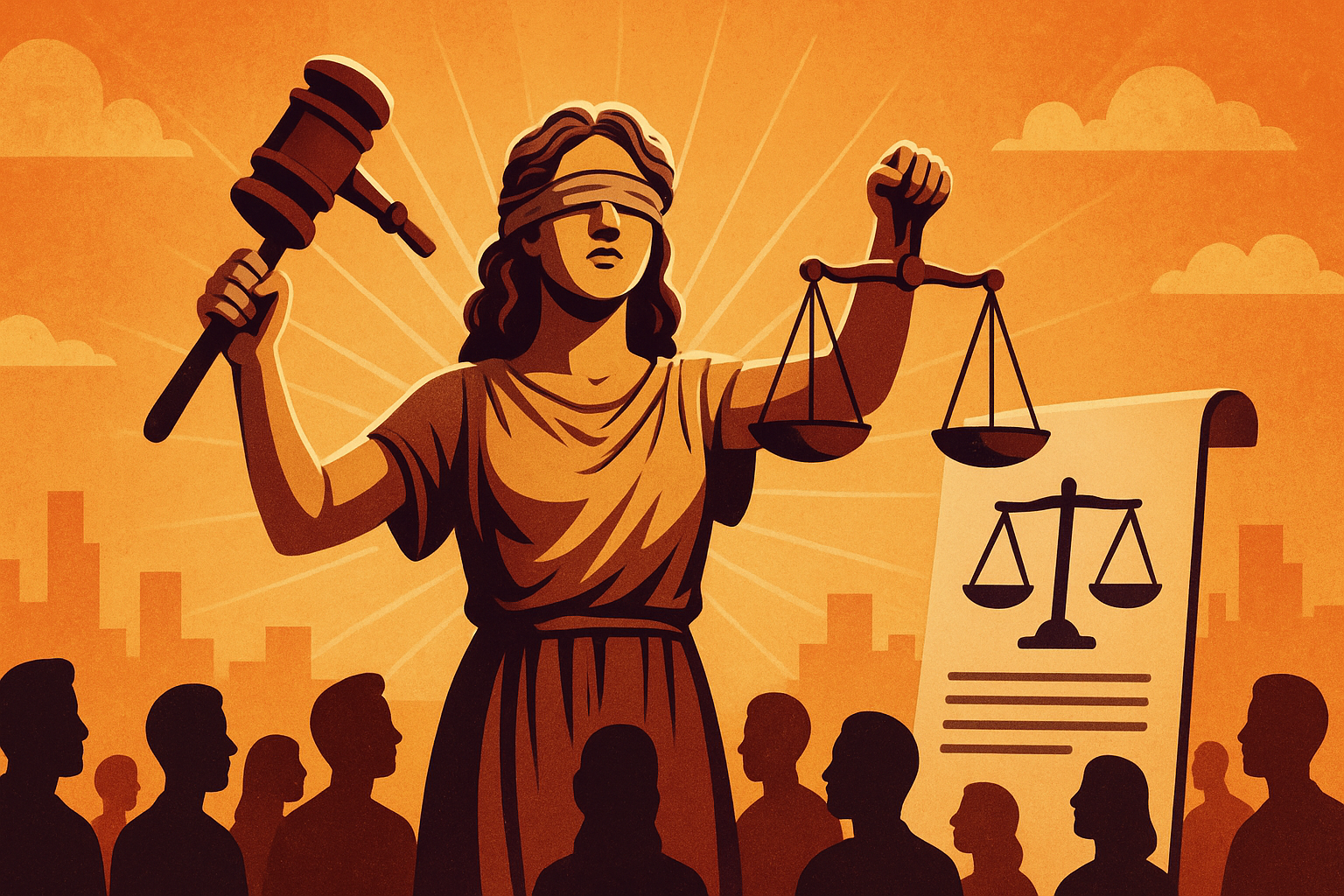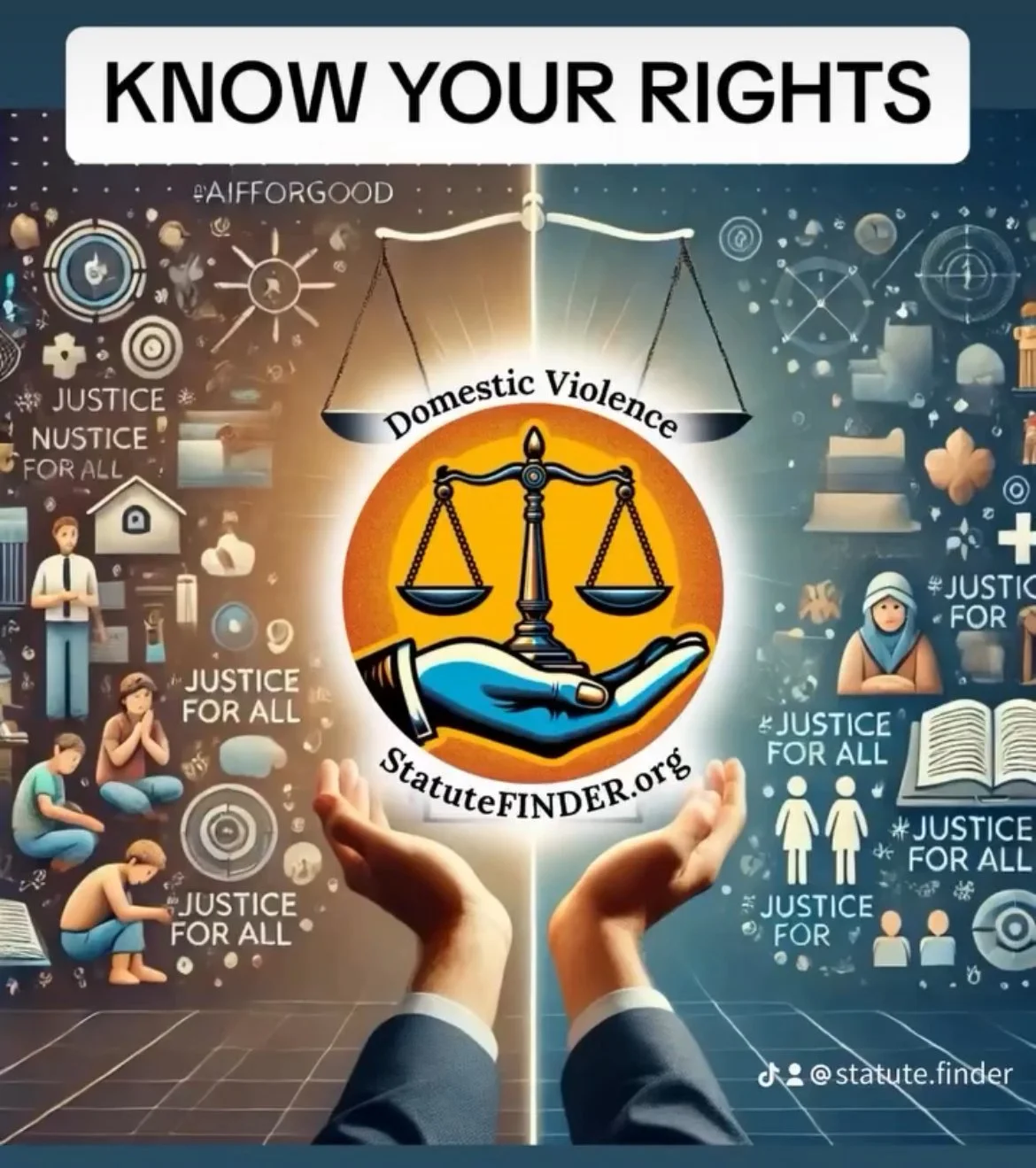How Free Technology is Transforming Justice for Domestic Violence Survivors
The criminal justice system enforces our laws, but access to legal information has traditionally been limited. Free digital tools like StatuteFINDER are changing this by putting legal resources directly into the hands of domestic violence survivors. But can technology truly make justice more equitable? And what challenges come with digitizing legal access?
As of September 28, 2025.
Introduction
When you think of the criminal justice system, what comes to mind? Judges, courtrooms, or law enforcement? Yet, many are unaware of digital resources such as apps and artificial intelligence that have been innovating how the system works.
However, can it actually make the criminal justice system fairer?
Let’s dive deeper into how technology is shaping the future of criminal justice and how tools like StatuteFINDER that use artificial intelligence are helping everyday victims defend their rights and feel better equipped to handle legal troubles surrounding domestic violence.
A System in Need of Reform
The Criminal Justice system has gained a reputation for targeting those who come from low-income backgrounds and marginalized communities. Many marginalized individuals have been racially profiled or subjected to harsh punishments.
This is because they are unable to provide themselves with the resources, like a lawyer, to have a fair chance in the system. That’s when free technology steps in and levels the playing field.
How Technology Is Changing Criminal Justice
1. Access to Legal Information
Before the integration of technology into the justice system, understanding the law meant hiring a lawyer or examining complicated legal work. Now, free apps like StatuteFINDER make it easier for domestic violence survivors who don’t have law degrees to:
Find resources for legal help or self-advocacy
Understand the language of laws
Understand what forms to file and how to respond to file motions
Understand their rights based on location and situation
That is a big leap forward in making justice more accessible and understandable.
2. Virtual Court Hearings
Virtual court hearings were very common during the COVID-19 pandemic. Virtual court hearings can be beneficial for many people because it removes the hassle of childcare and transportation, making it easier to show up and participate in their cases.
3. Data and Transparency
Technology is drastically changing the horizon of criminal justice. Recently, new technologies have made it possible to track data on arrests, monitor police behavior, and determine sentencing.
Having tools like AI makes it easier for communities and law enforcement to accurately and efficiently identify patterns of bias or injustice and push for reform based on real evidence.
4. AI and Risk Assessment Tools
While AI can be a useful tool, we cannot solely depend on it. For example, some courts use algorithms to help judges make decisions on bail or sentencing.
However, there is a growing concern that the algorithms that are meant to reduce bias may be worsening disparities between minorities because the information AI is given is flawed.
That is why it’s significant to have human integration to monitor these algorithms and avoid problems like that from happening.
The Role of StatuteFINDER
StatuteFINDER’s purpose is to make a tool that is simple to use, so it has a great impact on a wide range of domestic violence survivors who are seeking help. The free app completely changes the playing field for victims who are unable to access legal information.
StatuteFINDER empowers users by:
Explaining laws (statutes) in clear, relatable language
Teach survivors to know what to expect in a situation when the police, courts, or schools are involved
Giving survivors the resources to speak up and ask questions so that they can represent themselves
StatuteFINDER can make learning the law feel less out of reach; that’s ideally how the justice system should be.
Final Thought:
Technology is not the answer that can fix all of our problems, and it won’t hide the mistakes of wrongdoing we made in the past. Still, this app is powerful, and if used correctly, it can bring us closer to a justice system that’s not just faster or more efficient, but also fairer.
In the future, knowing your rights shouldn’t be a privilege; with tools like StatuteFINDER, it can become common knowledge.
How to Use StatuteFINDER
If you want to learn more about StatuteFINDER or how to use the StatuteFINDER app, click the video below:
Guest Author: Brenda Gallello
Brenda Gallello is a passionate law student pursuing her passion in criminal and civil law. She actively participates in debates, volunteers in a political campaign, and aspires to learn more about criminology and psychology.
Works Cited
“A Virtual Path to Justice: Paving Smoother Roads to Courtroom Access.” Americanbar.org, 2024, www.americanbar.org/groups/crsj/resources/human-rights/2024-june/virtual-path-justice-paving-smoother-roads-courtroom-access/. Accessed 5 July 2025.
Council on Criminal Justice. “The Implications of AI for Criminal Justice - Council on Criminal Justice.” My WordPress, 7 Oct. 2024, counciloncj.org/the-implications-of-ai-for-criminal-justice/. Accessed 6 July 2025.
Husson University. “The Role of Technology in Criminal Justice.” Husson University, 28 Sept. 2023, www.husson.edu/online/blog/2023/09/technology-in-the-criminal-justice-field. Accessed 6 July 2025.
Sengupta, Pamela. “Revolutionizing Justice - How Technology Can Transform Legacy Systems in the Criminal Justice Sector.” Techuk.org, 2024, www.techuk.org/resource/revolutionizing-justice-how-technology-can-transform-legacy-systems-in-the-criminal-justice-sector.html. Accessed 7 July 2025.



